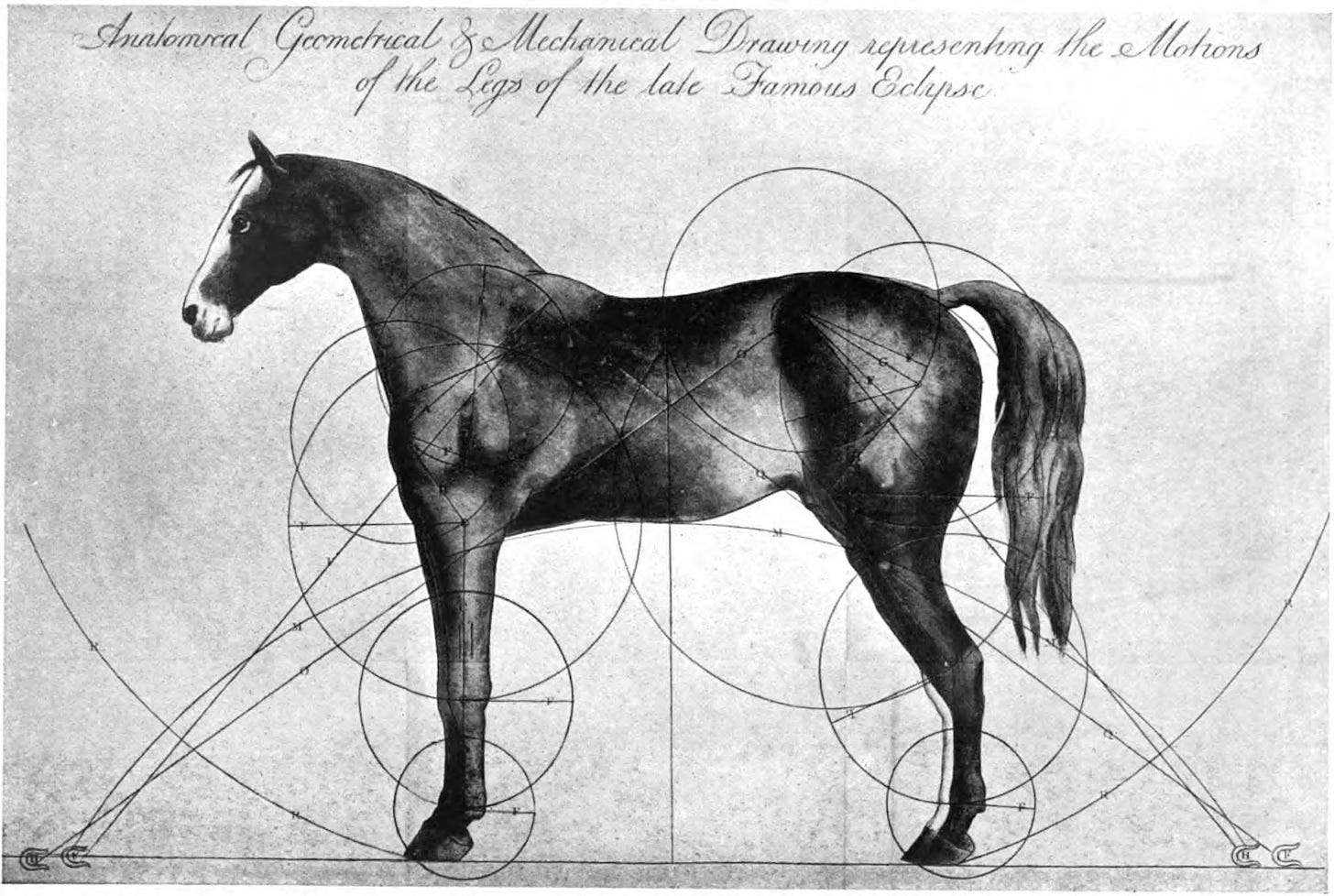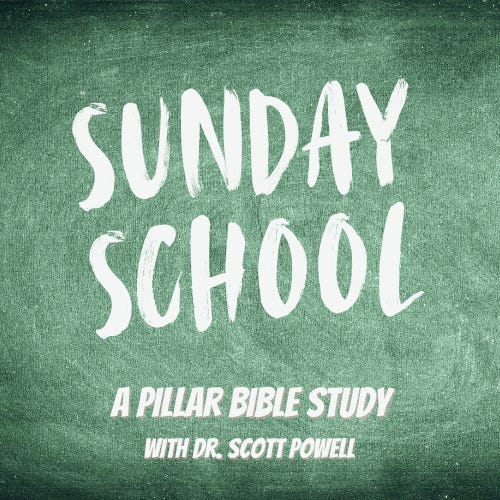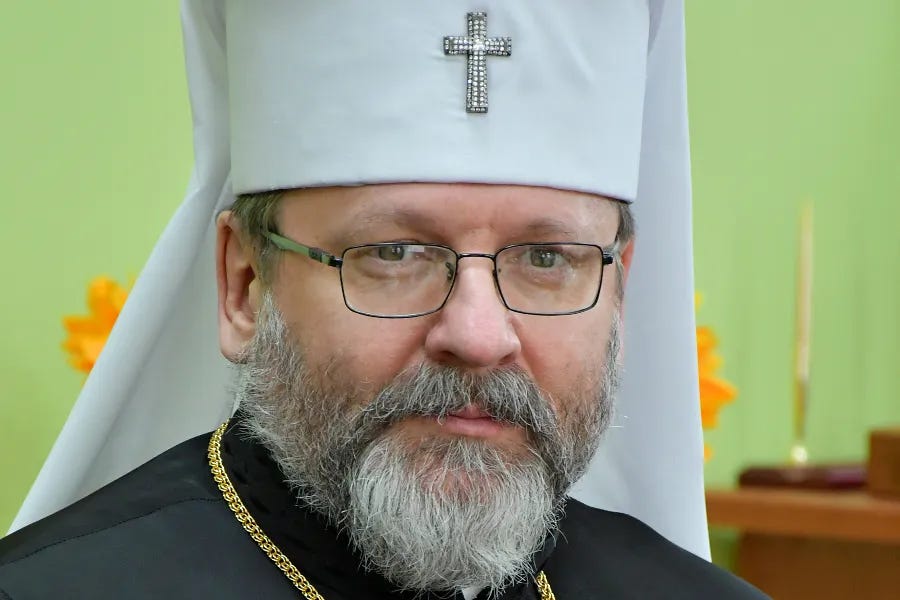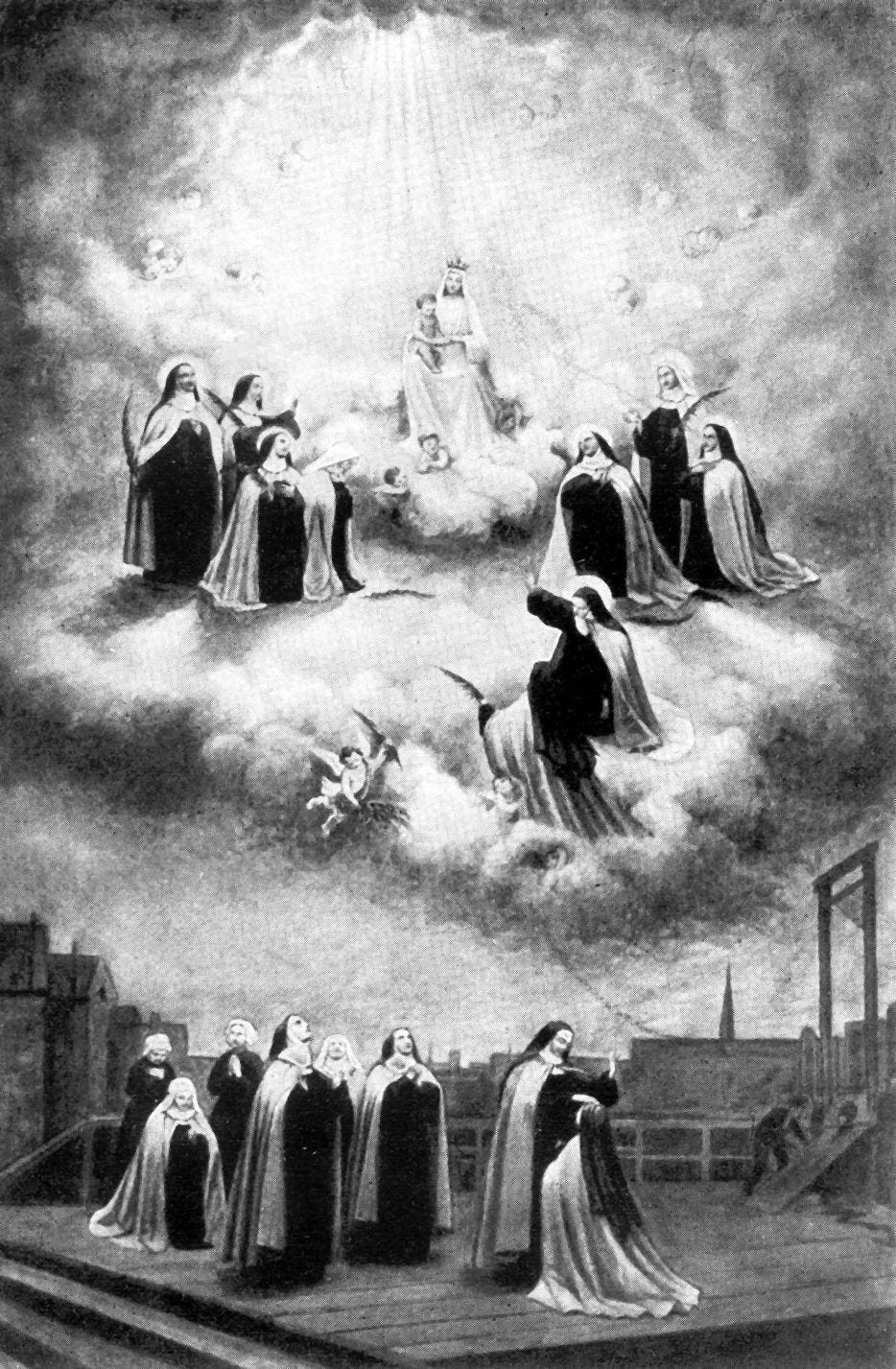Pillar subscribers can listen to this Pillar Post here: The Pillar TL;DR
Hey everybody,
First, for those of you who have asked, a reminder that Luke Coppen has been on vacation, and Starting Seven will resume later this week. Your email isn’t broken. Luke is just on vacation.
Now:
Today is an Easter Tuesday, and you’re reading The Tuesday Pillar Post.
On April 8, 1321, 703 years ago, a trio of Franciscans and a layman were traveling through northern India, trying to make their way to China.
When they first arrived in Mumbai, they were greeted warmly by Christians, who fed them, housed them, and supplied them for their journey.
The Franciscans arrived more than 200 years before the Portuguese Jesuits who would eventually find their place in the area, and they were probably surprised to find a thriving Christian community — traditionally attributed to the missionary work of the Apostle Thomas, and also to the fourth-century Middle-Eastern Christians who emigrated to the region.
But the Franciscan missionaries in India didn’t get very far east before they found themselves in difficulty.
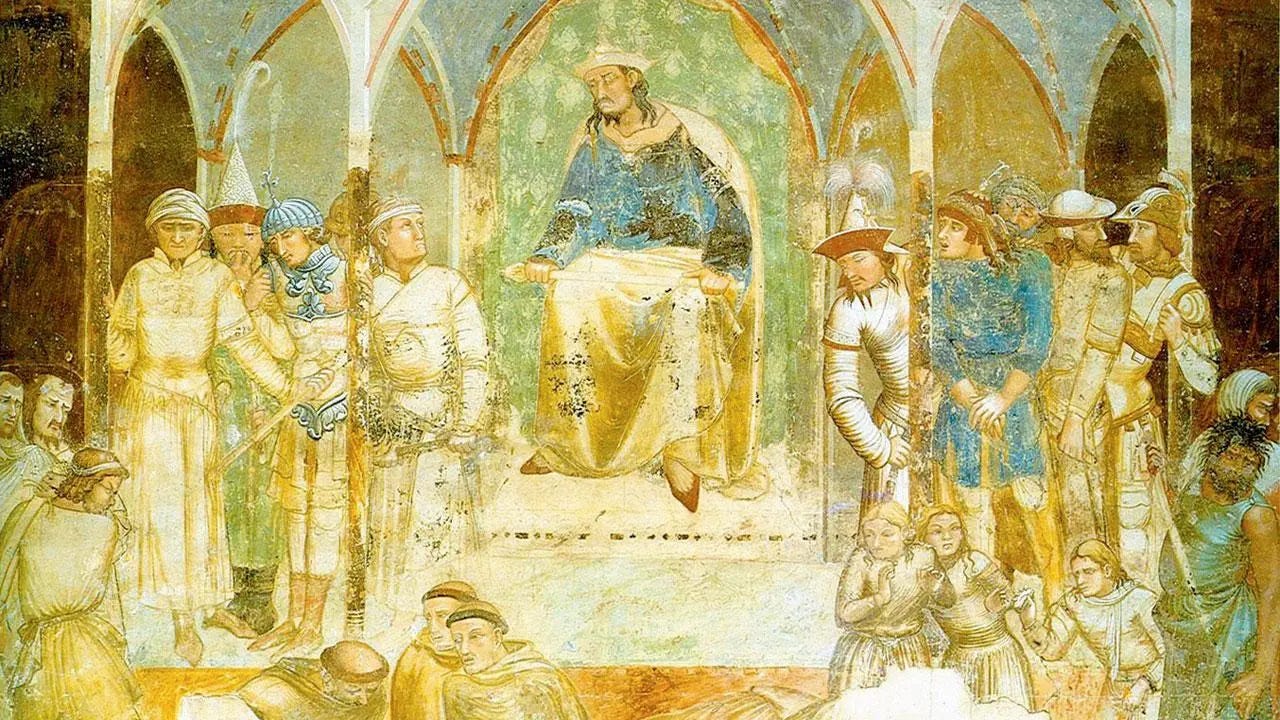
By one historical account — the most common — the men were staying with a Muslim family, where they observed the husband beating his wife. When the wife took her husband to court, she mentioned that the missionaries were witnesses to the violence.
Three men were called to court — the Franciscans Thomas of Tolentino and James of Padua, along with the layman, Demetrius of Tiflis.
There at court, a discussion of religion broke out, as the missionaries explained why they were in India.
One of the Franciscans, Thomas of Tolentino, told the shari’a judge they were there to preach Christ. And when Thomas was asked about Mohammed, he called him a “son of perdition.”
The men were executed for blasphemy. The fourth Franciscan, Peter of Sienna, was executed a few days later.
The Franciscan community venerated the men as martyrs soon after they were killed. While they were all regarded as beati from the fourteenth century onward, their cult of devotion was approved by Pius VII in 1809.
Anywho, I tell you this story for two reasons. The first is that today, April 9, is traditionally the day on which the martyrs — Thomas of Tolentino and companions — are remembered at the altar.
But also, because Christians in India continue to face a rising tide of violence, perpetrated in many Indian states by Hindu nationalists.
Pastors and priests are often charged with “forcing conversions,” even when it is manifestly clear they’re meeting with Christians or providing them catechesis and pastoral care. And in some regions, mob violence is a fact of life for Christians, who often see liturgies and other services forcibly canceled by local authorities as a way of quelling mob demands.
In short, Christians face real and rising persecution in India, and we should pray for them.
Blessed Thomas of Tolentino and his companions certainly do.
The news
The Dicastery for the Doctrine of the Faith on Monday published Dignitas infinita, a kind of doctrinal declaration meant to reflect on human dignity and contemporary moral and social problems.
The document had an interesting lead-up. Earlier this year, as a lot of Catholics complained about the Vatican’s Fiducia supplicans, DDF prefect Cardinal Victor Fernandez began touting the document, promising, essentially, that Catholics displeased with Fiducia supplicans would find a more conventional articulation of Catholic moral principles in a forthcoming text.
Well, on Monday, that text was released, and indeed, it has not nearly generated the kind of controversy that some documents of the Francis pontificate have.
There are some open questions about the text’s framing of the death penalty, especially in light of Francis’ prior discussion of the subject, which I expect will generate some ongoing discussion. And some transgender groups have said the document fails to seriously understand the “gender theory” it criticizes.
But for the most part, the text is attracting interest from moral theologians, without attracting the kind of controversy that some expected.
At The Pillar, we didn’t want to just report on the document. We did write a standard report on it, of course.
But then we invited three serious theological minds — Charlie Camosy, Fr. Tom Berg, and Abigail Favale — to give us live updates and analysis as they read the text.
Those rolling updates will continue throughout today — so keep updating the tab in your browser for more insight.
You can check them out, along with our initial report — right here.
The details of the allegations against Saunders are disturbing.
The bishop maintains his innocence.
But The Pillar spoke this week with Saunders’ former secretary, who says she was regularly directed to make payments to several young Aboriginal men, and that Saunders was routinely abusive to staff when they asked what the money was for.
The bishop’s case has had a lot of ups-and-downs, with two police investigations before Saunders was charged, and a Vos estis lux mundi investigation.
In addition to the sexual misconduct, Saunders is alleged to have spent hundreds of thousands of dollars of diocesan money on gifts for vulnerable young men, including cash, phones, alcohol, and travel.
His former secretary, Cherrille Quilty, told The Pillar that she’d given police and Church officials both financial records and her experience working for the bishop.
With the evidence mounting, Saunders seems likely both to be sentenced to prison, and be eventually laicized.
—
In a letter to the College of Cardinals last week, Pillar reader Cardinal Angelo Becciu — now convicted of serious financial crimes — said that he didn’t attend the Vatican’s Chrism Mass because he had faced an “insistent media pillory of planetary dimensions.”
Given that celestial circumstance, Becciu told the cardinals that, despite his “heavy and unjust” conviction, his presence would “obscure the splendor of you cardinals.”
Becciu, who maintains his innocence, has long insisted that media reporting — much of it from The Pillar — had “misled the faithful,” even after his December 2023 courtroom conviction.
While the cardinal has admitted to transferring about 130,000 euros of Vatican cash to his brother’s bank account, for example, Becciu has insisted that’s ordinary Vatican practice, despite the fact that it garnered him a criminal conviction.
And while Becciu has often claimed support from the pope, Francis released to the public a series of letters in which he lamented “extemporaneous and incautious assignments of financial resources,” and refused to go along with a cover-up scheme proposed by Becciu.
Nevertheless, Becciu told cardinals that “history will prove me right.”
The Vatican announced the meeting hastily, after complaints were raised that the synod on synodality organizers in Rome basically forgot to include parish pastors in the October global meetings of the Church. While bishops, priest scholars, religious orders, Vatican officials, laypeople, and non-Catholics were represented, parish priests really … weren’t.
So at the end of this month, the Vatican will bring 300 parish priests to Rome to synod together, as it were.
One of the U.S. priests is Fr. Donald Planty, an Arlington, Virginia pastor with an interesting biography: The priest grew up in a family of diplomats, living in Latin America and Europe, and then spent years in the Vatican’s own diplomatic corps, working for the Holy See in the Vatican, in Egypt, in Ethiopia, and in Eritrea, before becoming chaplain at Christendom College, and a pastor.
He talked with The Pillar about preparing for his role, his sense of synodality, and why the concept has struggled to gain support here in the U.S.
Fr. Planty is an interesting guy and — in some senses — he’ll help represent a big swath of the American presbyterate to the Vatican. So if that includes you, or you’re interested in who’s speaking on behalf of parish priests, you should read this interview.
The bishop alleged that Vigano had defamed him over a disagreement about liturgy, though as canonical charges go, defamation is a bit lower on the ecclesiastical totem pole than illicit priestly ordinations.
Vigano, who was apostolic nuncio in the U.S. and then made headlines with a set of 2018 letters about Theodore McCarrick, has become in recent years a somewhat mysterious figure — he rarely appears in public, but does maintain a social media account, and issues missives which have condemned the Second Vatican Council as heresy, floated the idea of Vatican-involvement in a Masonic one-world order scheme, and weighed on U.S. politics, with a strong endorsement of presidential candidate Donald Trump.
The Vatican has been content to ignore Vigano, at least publicly, with Francis appearing unwilling to give his sharp critic more attention, or more fuel for his populist fire.
Even when Vigano pledged last year to open a seminary for, apparently, acephalous clerics who would resist “Bergoglio-ism,” the Holy See gave no indication of having acted.
But if Vigano is ordaining priests and sending them into dioceses, well, Powers won’t likely be the last bishop to speak up — though he should be recognized as the first.
This would seem to be a kind of tipping point at which the Vatican’s strategy has manifestly not worked, with real world consequences for actual dioceses — rhetoric being one thing, and roving “independent” presbyters being another.
But will the Congregation for Bishops convince the pope — and the Secretariat of State — to act? If not, are there more delicate or diplomatic reasons not to?
Here’s what happened last week.
—
Finally, yesterday was eclipse day, as you know.
At The Pillar, we celebrated with a little Catholic eclipse trivia — including the story of Pope Urban VIII, who was so preoccupied with an astrological prediction of his eclipse-related death that he summoned an imprisoned Dominican heretic to his residence, where they conducted some very weird rituals to try reversing the prediction.
Urban didn’t die, which doesn’t mean his ritual things worked. In fact, there’s some very good news at the conclusion of that story:
After a few more forays into the world of fortune-telling, Urban issued a decree which forbade Catholics from taking part in astrological prediction and speculation.
You can read about that, and some other Catholic eclipse stuff, right here.
The Equine Rebiba
And while we’re talking about the eclipse, let me tell you about a racehorse.
The horse was born in Britain on April 1, 1764, at the moment of a solar eclipse, as the story goes, in the Cranbourne Lodge stable of Prince William Augustus.
Eclipse, as they called him, happened to be born at a kind of golden age for horse racing in Britain — or at least, a high point for horse betting. The country had gone gambling mad, actually, with horse racing bets placed in makeshift bookie parlors across the country — usually very close to cock fighting rings, where more bets were placed before the ponies raced.
And Eclipse was fast.
Very fast.
He started racing at age five — a little older than was typical — and he loved to run. Won every race he entered. Was recorded as so fast that he’d easily outpace every horse on a track today — assuming the stories are true.
It’s hard to know if they’re true, because Eclipse became a legendary animal. He was retired after only 18 months of racing, because, well, he won so much that bookies were out of work, and betting didn’t make sense anymore.
He broke the game.
So Eclipse became a stud. Actually, his owner — by then, he’d been purchased by a prolific bookie — more or less invented the modern stud fee, and breeders were so eager that Eclipse sired 344 horses.
Those horses sired more horses, and the thoroughbred breeding industry was born. While before, racehorses were often just fast horses whose owners got them into racing, in the post-eclipse world, nearly all racehorses were bred for it.
That’s why today, more than 80% of thoroughbred racers can trace their lineage to Eclipse.
(And, by the way, the Mitsubishi Eclipse was named for him. But mostly built with parts from the Eagle Talon and Plymouth Laser.)
So what does it mean that he’s the Equine Rebiba?
Well, here’s the deal. Today, nearly every Catholic bishop — the exceptions being some-but-not-all Eastern Catholic bishops — can trace their episcopal lineage to Cardinal Scipione Rebiba.
In the 1500s, Rebiba was Archbishop of Pisa, and Latin Patriarch of Constantinople. He was also eventually prefect of the Holy Office, the predecessor of the DDF.
Rebiba consecrated bishops, just like every other bishop does.
But more than 100 years later, one of the bishops in Rebiba’s episcopal lineage, Cardinal Vincenzo Maria Orsini, served as prefect of the Congregation for the Propagation of the Faith, and then as Pope Benedict XIII.
In those roles, he consecrated personally 139 bishops, both for important European sees and for missionary roles around the world. He was something of a consecration bottleneck, really. And as his episopal descendents consecrated new bishops, other “episcopal lines” died out.
This means that eventually, nearly every Catholic with a mitre could trace his consecration to Benedict XIII, and, beyond that, to Rebiba.
But since no one knows who consecrated Rebiba — the records being spotty at that time —that’s where the buck stops.
He’s the Eclipse of the Episcopacy, you might say.
Please be assured of our prayers. And please pray for us.
We need it.
Yours in Christ,
JD Flynn
editor-in-chief
The Pillar

